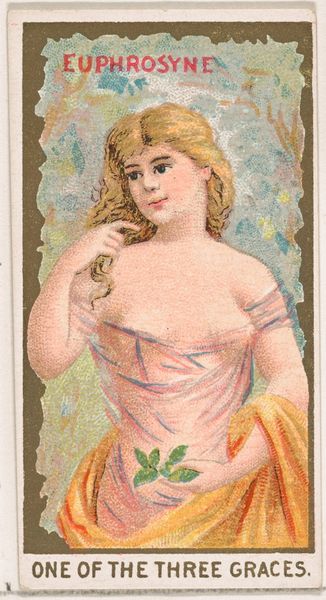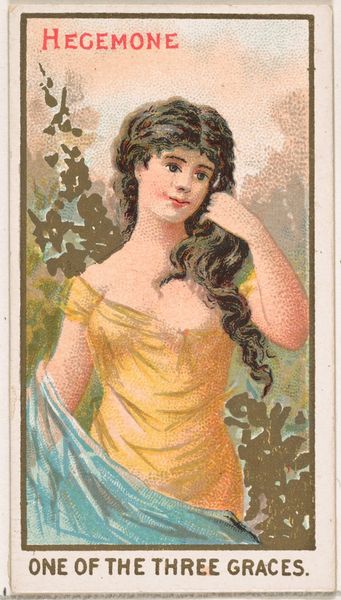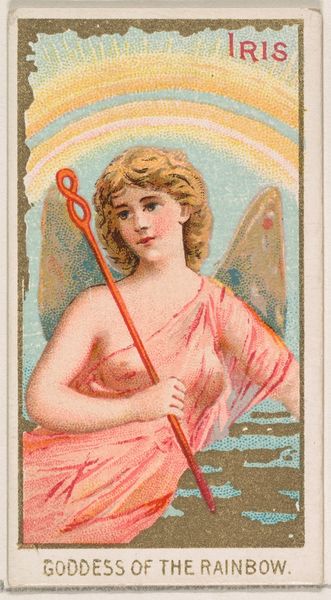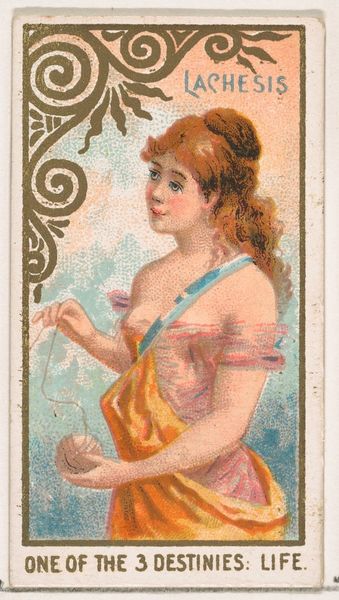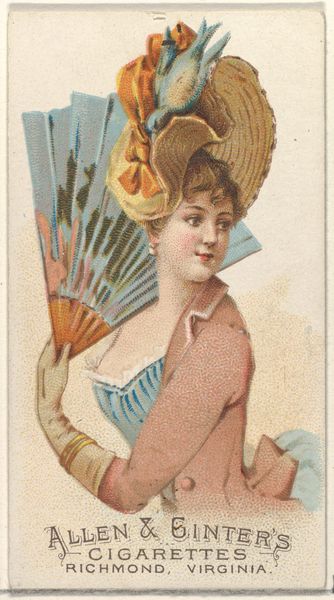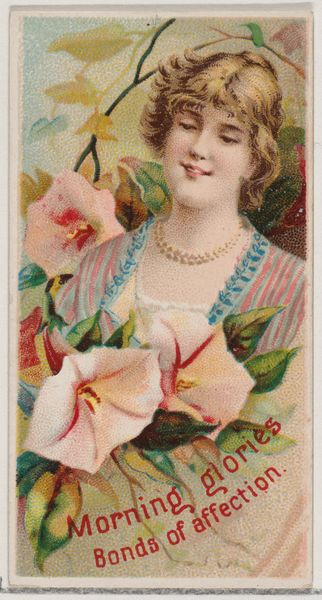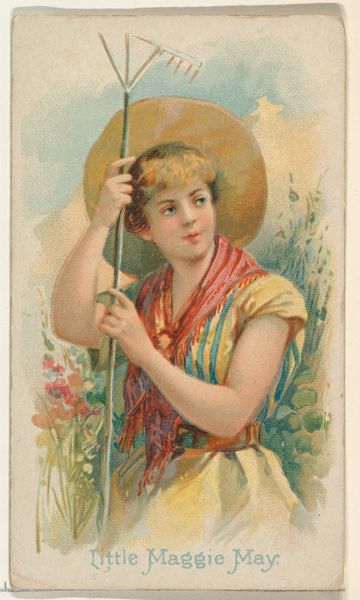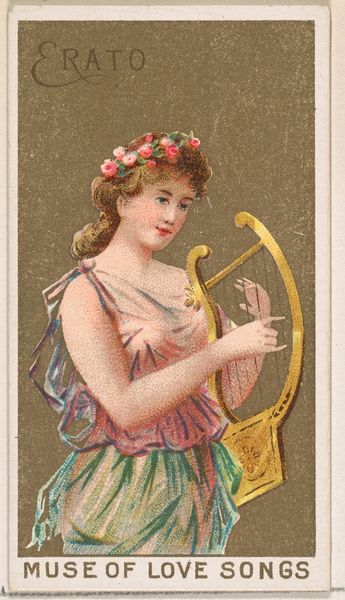
Hekate, Goddess of Darkness, from the Goddesses of the Greeks and Romans series (N188) issued by Wm. S. Kimball & Co. 1889
0:00
0:00
drawing, print
#
portrait
#
drawing
# print
#
symbolism
#
portrait drawing
#
history-painting
Dimensions: Sheet: 2 3/4 × 1 1/2 in. (7 × 3.8 cm)
Copyright: Public Domain
Editor: Here we have "Hekate, Goddess of Darkness," a print from 1889 by William S. Kimball & Co. There's something about her gaze and the torches she holds that feels both powerful and melancholic. What strikes you most about this piece? Curator: It's interesting to consider how Hekate, typically associated with the liminal—thresholds, magic, the night—is represented in the late 19th century. This was a time of burgeoning spiritualist movements and anxieties about shifting gender roles. How might Hekate, a powerful female figure associated with the unseen, have resonated with contemporary audiences? Editor: That's fascinating! I hadn't thought about it in terms of the social context. Do you see that reflected in the imagery itself? Curator: Absolutely. While she's titled "Goddess of Darkness", she is depicted in a fairly conventional classical style. The use of print media made images of powerful figures like Hekate accessible, subtly empowering women. The torches aren't just symbols of darkness, but potentially illumination – a challenge to established societal norms, wouldn’t you agree? Editor: I can see that now. It's a potent image, especially considering what it might have symbolized at the time for female identity. Curator: Indeed, she exists as both a classical representation and a figure laden with potential for social commentary and perhaps, subversion. Editor: It gives me a completely new appreciation for it. I thought it was just an interesting image, but it's clearly much more than that. Curator: These historical contexts invite us to interpret this image through contemporary discussions about agency, visibility, and the power of representation. Hekate, in her darkness, might be urging us to question the very narratives that seek to define us.
Comments
No comments
Be the first to comment and join the conversation on the ultimate creative platform.
